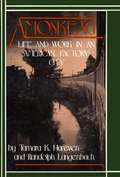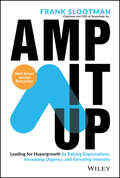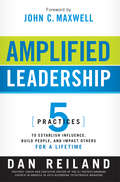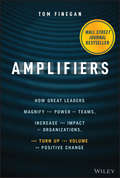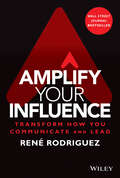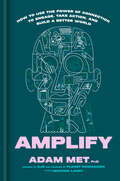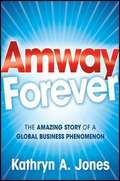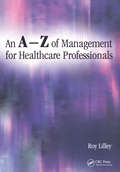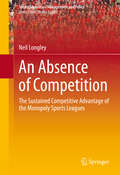- Table View
- List View
AmorePacific: From Local to Global Beauty
by Pankaj Ghemawat Carin-Isabel Knoop David KironSuh Kyung-Bae, the President and CEO of AmorePacific, a South Korean cosmetics company, was an ardent globalizer. In its home market, AmorePacific had held off major multinational players such as L'Oreal and Estee Lauder and had engaged them in markets around the world, from France to China. The case discusses the company's position and options in the Korean, French, U.S., and Chinese markets. To reach their aim to run one of the top 10 cosmetics companies in the world, with 4 billion in sales by 2015 (1.2 billion from outside Korea), company managers had to ensure that as a global company, AmorePacific amounted to more than the sum of its country parts--a challenge compounded by deep differences across countries. Related questions included: in which countries should AmorePacific focus invest resources and managerial emphasis and attention? How concerned should they be about the diversity of approaches being taken in the three major countries/regions? And what role did non-organic options--aquisitions or joint ventures--plan as a way of boosting international growth rates?
Amoskeag: Life and Work in an American Factory-City
by Tamara K. Hareven Randolph LangenbachFirst published in 1978, this classic book, through vivid oral histories and historic photographs, documents the social and cultural impact of the industry during America's rise as a manufacturing power. For nearly a century, the Amoskeag Manufacturing Company was chief architect of the social, ethnic, and economic existence of Manchester, New Hampshire. In the early 1900s, it was the largest textile mill in the world, employing 17,000; its red brick facade stretched for nearly a mile along the Merrimack River and its payroll drew immigrants by the thousands. In their own words, laborers, foremen, managers, and town residents paint a detailed portrait of the mill's nearly feudal dominance of every aspect of their lives and offer their response to this existence, with fierce pride and an unshakable sense of community. When competition, labor unrest, and obsolescence caught up with the mill in 1936, a weaver recalls, "the mills went out and the world stopped for everybody. "
Amp It Up: Leading for Hypergrowth by Raising Expectations, Increasing Urgency, and Elevating Intensity
by Frank SlootmanWall Street Journal, USA Today, and Publishers Weekly BestsellerThe secret to leading growth is your mindset Snowflake CEO Frank Slootman is one of the tech world's most accomplished executives in enterprise growth, having led Snowflake to the largest software IPO ever after leading ServiceNow and Data Domain to exponential growth and the public market before that. In Amp It Up: Leading for Hypergrowth by Raising Expectations, Increasing Urgency, and Elevating Intensity, he shares his leadership approach for the first time. Amp It Up delivers an authoritative look at what it takes to transform an organization for maximum growth and scale. Slootman shows that most leaders have significant room to improve their organization's performance without making expensive changes to their talent, structure, or fundamental business model—and they don’t need to bring in an army of consultants to do it. What they do need is to align people around what matters and execute with urgency and intensity every day. Leading for unprecedented growth means declaring war on mediocrity, breaking the status quo, and making conflicted choices daily, all with a relentless focus on the mission. Amp It Up provides the first principles to guide that change, and the tactical advice for organizing a company around them. Perfect for executives, entrepreneurs, founders, managers, and leaders of all kinds, Amp It Up is a must-read resource for anyone who seeks to unleash the growth potential of a company and scale it to heights they never thought possible.
Amp Up Your Sales: Powerful Strategies That Move Customers to Make Fast, Favorable Decisions
by S. Anthony Iannarino Andy PaulSalespeople today face a fast-paced and increasingly crowded marketplace where meaningful product differentiation has all but disappeared. To compete successfully, sellers must set themselves apart in the eyes of buyers. Amp Up Your Sales shows anyone how to become the trusted sales professional who consistently wins new business. Customers are overloaded with information, overwhelmed by options, and short on time--so the salesperson who is always responsive and completely focused on value, is the one who will stand out from the crowd and get the sale. Combining leading-edge research with field experience, the book shows readers how to: Maximize the value of their selling * Accelerate responsiveness to build trust and credibility * Earn valuable selling time with customers * Shape the buyer's vision * Integrate persuasive stories into their sales process * Build lasting relationships through follow-up and customer service Insightful and practical, the book arms salespeople with a powerful set of strategies they can use to spur buyers to say yes!
Ample Hills Creamery
by Tom Quinn Thomas R. Eisenmann Lindsay N. HydeAmple Hills Creamery started in 2010 as a temporary ice cream pushcart in Brooklyn, New York City. On the strength of inventive flavors and clever marketing, husband-and-wife founders Brian Smith and Jackie Cuscuna built a premium, artisanal dessert empire of 16 retail locations in four states. However, some decisions that fueled their rapid growth were double-edged swords. Licensed partnerships with Disney raised the brand's profile, but necessitated expanding production. The factory they built was expensive and introduced new logistical challenges. And the native New Yorkers were unhappy with a pricey West Coast expansion. In March 2020, they filed for bankruptcy, disappointing the venture capital investors they had attracted and the legions of fans who did not understand why the popular brand was not turning a profit. The protagonists' story continues in The Social (HBS No. 822-074), which tells the story of their second ice cream venture.
Amplified Leadership: 5 Practices to Establish Influence, Build People, and Impact Others for a Lifetime
by Dan ReilandThe leaders you develop today will determine your ministry&’s future.If you want your ministry to reach its maximum potential, all that God wants for you, it is essential that you develop strong leaders. In Amplified Leadership, &“pastor&’s coach&” Dan Reiland gives you a proven process for developing new leaders that are established spiritually and trained practically. Not just a checklist of things you should do, Amplified Leadership provides an intentional development process that starts with your relationships and ends with empowered leaders who are ready to make an impact. With personal examples and proven advice, Reiland gives you the tools you need to: •Establish relationships •Engage followers •Embrace and equip team members •Coach your apprentices •Mentor new leadersThe ability to develop leaders is a life-changing gift. When you successfully empower and release people to leadership, you give them the opportunity to fulfill their potential and advance the mission of the church.
Amplifiers: How Great Leaders Magnify the Power of Teams, Increase the Impact of Organizations, and Turn Up the Volume on Positive Change
by Tom FineganDiscover how to enable strategic change efforts by relying on your best people In Amplifiers, entrepreneur and expert management and technology consultant Tom Finegan delivers an insightful new way to think about human behavior in the execution of corporate transformations. Through an exploration of the career journeys of several leaders and analyses of “True Amplifiers” in action, the book demonstrates how to deliver strategic and transformative change by relying on the efforts of key, exemplary followers. This important book: Explains the different ways that being a true amplifier is experienced by different ethnicities and genders Describes the “Cell Concept” of amplifiers, and how they interact with other stakeholders of your organization Discusses the work of amplifiers across global industries and organizations Perfect for executives, managers, and other business leaders responsible for change management and strategic execution, Amplifiers also belongs on the bookshelves of anyone who hopes to contribute to or lead organizations as they change direction.
Amplify Your Influence: Transform How You Communicate and Lead
by Rene RodriguezApply the latest advances in neuroscience to your real-world persuasion and influence strategies for immediate results In Amplify Your Influence: Transform How You Communicate and Lead, celebrated keynote speaker, trainer and leadership coach Rene Rodriguez delivers an eye-opening roadmap to using applied neuroscience to improve readers’ communication ability, critical thinking, cultural awareness, and leadership skills. Based in the author’s proprietary AMPLIFII system and methodologies he has taught to over 100,000 participants around the world, the book offers practical tips, useful frameworks, guided practice, and simple application exercises to help readers create new and lasting behaviors that effect change in their life and work. Amplify Your Influence shows leaders how to: Leverage various human motivators for positive outcomes and results Frame and communicate their ideas in a way that encourages engagement and gets an active response Intentionally choose a communication style based on their influence objective Perfect for executives, managers, sales professionals, and other business leaders, Amplify Your Influence is required reading for anyone seeking to improve their ability to effect change in the people around them, whether they’re in the office, the boardroom, the classroom, or at home.
Amplify: How to Use the Power of Connection to Engage, Take Action, and Build a Better World
by Adam Met PhDA blueprint for boosting your activism and building support for the causes you care about, featuring fan-building tactics from the music industry and the voices of today&’s most passionate change-makers&“This book shines a light on a wealth of new strategies to help reach people in ways that are both authentic and resonant.&”—John KerryFrom stadium acts to indie singer-songwriters, musicians have pioneered ways of sparking passion, building awareness, and catalyzing engagement. Now imagine if social movements—from the fight to protect the planet to campaigns promoting global health or LGBTQIA+ rights—had the same fervent support as your favorite artists.Adam Met, climate advocate, educator, and member of the multiplatinum band AJR, gained firsthand experience growing an audience from the ground up as the band progressed from playing in living rooms to selling out arenas. With award-winning journalist Heather Landy, Met shows how to apply fan-building strategies to social movements in exciting, inventive ways. Amplify is a playbook for developing passionate supporters (i.e., fans) utilizing the art and science of engagement, collaboration, and authentic connection, with tactics that will inspire people to carry your message to the world and spur others to act.Amplify&’s innovative tool kit will help you find your voice and maximize your impact in the world of social progress to create the change you want to see.This movement-building manifesto includes cutting-edge research and strategies from today&’s most effective organizers, engagers, and thinkers, including extensive interviews with • Adam Grant (Wharton professor) on embracing disagreement within a movement• Christiana Figueres (Paris Climate Agreement architect) on finding a path to solutions• Andrew Yang (former U.S. presidential candidate) on becoming the front person for your ideas• David Hogg (March for Our Lives co-founder) on the challenges of building a youth-led movement• Chi Ossé (youngest-ever NYC council member) on working outside the box but within the system• Sue Doster (NYC Pride co-chair) on keeping movements nimble and relevant• Glenn Beck (conservative commentator) on finding common ground• Jim Gaffigan (comedian) on setting and achieving goals• Bill Nye (scientist and entertainer) on communication that connects with people• Ben Folds (musician) on staying in sync with your audience• Jamie Drummond (ONE Campaign co-founder) on the beauty of purposeful compromise• Enongo Lumumba-Kasongo (hip-hop scholar) on the intersection of activism and history• Wendy Laister (Duran Duran manager) on harnessing the energy of live events• Clyde Lawrence and Jordan Cohen (of the band Lawrence) on pressing your argument• MAX (musician) on the power of collaboration• Sam Hollander (songwriter) on aligning different perspectives• Astro Teller (co-founder of Alphabet&’s X division) on taking moonshots
Amplifying Your Fans: A Five-Step Plan for Successful Word-Of-Mouth Marketing Using Social Technologies
by Josh Bernoff Ted SchadlerDoes your product or service have fans? Now that your customers are communicating with others-perhaps thousands of them at once-on their mobile devices, you need to find customers who love you, and then let them spread the word. In other words, you need to build your fan base and let it go to work for you. In this chapter, authors Josh Bernoff-coauthor of "Groundswell"-and Ted Schadler introduce a five-step method for amplifying positive word of mouth: 1) Gather and analyze customer perspectives; 2) Respond to your customers; 3) Enable your customers to talk about you; 4) Amplify your customers' voices; and 5) Make changes based on what you've learned. Through real-life examples from Microsoft, the NHL, and Genzyme, you'll understand why word of mouth is one of the hottest trends in marketing. This chapter was originally published as Chapter 6 of Empowered: Unleash Your Employees, Energize Your Customers, and Transform Your Business
Amul Dairy
by Ian Mckown Cornell Ray A. GoldbergIn 2013, Rahul Kumar, the managing director of Amul dairy, India's leading dairy firm, had to decide how to position his firm for the future in light of India's growing population and demand for dairy. How could he maintain the firm's cooperative structure, address the nutritional needs of all Indians, make use of emerging technology, and navigate the country's dairy policies in the coming years?
Amul: Oor Adhisaya Vetrikadhai (First Edition)
by N. ChokkanThis book vividly narrates the success story of ‘Amul’, a popular milk product brand in India.
Amway Forever
by Kathryn A. JonesA fascinating look at five decades of Amway's innovation Amway started in 1959 as a way for people to earn extra money selling soap and cosmetics. Today, it has recaptured the public's attention largely because of an extensive print and broadcast campaign featuring the Quixtar name-with ads saying "you know us as Amway. " Amway Forever chronicles the amazing inside story of this global business phenomenon. Page by page, it explores the history of Amway and its remarkable resurgence around the world. From how the company began and its growing pains in the 70's and 80's to its recent online revival, this book explores how Amway has survived and thrived over the past fifty years. Delves into how innovation has led to Amway's growth into an international powerhouse Reveals Amway's pioneering marketing tactics and sales strategies Offers an historic perspective, as well as a contemporary look, at how the company has evolved Engaging and informative, Amway Forever is a must-read for anyone interested in this company's unique business model and buzzworthy emergence into a global success.
Amway Japan Ltd.
by John A. Quelch David J. Arnold Yoshinori Fujikawa Patrick ReinmollerIn April 1997, the president of Amway Japan (AJL, Tokyo, Japan), pondered how to reverse the first performance decline the company has experienced since entering the Japanese direct selling market in 1979. Established as the tenth overseas subsidiary of Amway Corp. of Ada, Michigan, AJL had grown to become the most successful company with 1996 sales of Y212 billion ($1.9 billion), accounting for 30% of Amway's worldwide sales. Having succeeded in doubling AJL's sales during the five years of his presidency, the AJL president now needed to develop a strategy not only for rebuilding growth in the second half of FY 1997 but also for achieving AJL's long-term goal of sales of Y300 billion by FY 2000. AJL faced the following issues in 1997: 1) fluctuating distributor motivation, 2) growing dissatisfaction with Amway products, 3) increasing difficulty in controlling the distributor network, and 4) a changing market environment. AJL could enhance its sales growth by boosting sponsoring, retention, and/or productivity of its distributor membership. Strategic options for AJL included: 1) penetration growth, 2) productivity growth, or 3) both. The AJL president needed to come up with a clear strategic design based on a thorough analysis of the pros and cons of each strategic choice.
Amyris Biotechnologies: Commercializing Biofuel
by Gary P. Pisano Alison Berkley WagonfeldIn 2009, Amyris Biotechnologies was building a plant in Brazil that used synthetic biology to convert sugarcane into both renewable fuels and renewable chemicals. The Amyris' marketing team was investigating the commercial interest for both types of products, while the research and development team and the operations group were building processes that could accommodate both as well. CEO John Melo hoped to have commercial product available in 2011; however, he realized that pursuing both chemicals and fuels added even more complexity to a business that was already executing multiple development steps in parallel. The case looks at the various strategic and operational decisions facing Melo as he planned the company's optimal commercialization strategy.
An (Abbreviated) Perspective on Entrepreneurship
by Mitchell B. Weiss Benjamin HenkesAmong the many competing definitions of entrepreneurship, the one adopted in The Entrepreneurial Manager at HBS was authored by Howard Stevenson in the 1980s and elaborated on in the decades since. Stevenson provided a managerial take on the term; he described entrepreneurship as a distinct approach to management. That approach is the subject of this brief note. The note provides his definition of entrepreneurship ("the pursuit of opportunity without regard to resources currently controlled") and six domains that differentiate entrepreneurial managers from administrative managers.
An A-Z of Management for Healthcare Professionals
by Roy LilleyRoy Lilley, creator of the best selling Tool Kit series for the NHS, has produced his personal A-Z of management topics. It covers key issues for today's managers to think about and act upon. The author takes the 26 letters of the alphabet and matches them to practical ideas for managers facing the challenges of change and the pressures of expectations. Each word he has chosen for his 'alphabet' encapsulates and describes a management style or achievement, or perhaps habits or routines, that have impressed him. They are words that describe the extra 'thing' that made a manager stand out, sparkle, seem different from the rest. Each idea is presented with hazard warnings, thinking-issues and exercises, for personal development and organisational improvement. This book is for any manager in healthcare, whether just starting out or a seasoned professional. Clinical directors, general practitioners, practice managers, managers in newly formed Primary Care Trusts and elsewhere in the NHS, and managers in the professions and trades that support and sell to the health service, will all find the book stimulating, informative and practical.
An Absence of Competition: The Sustained Competitive Advantage of the Monopoly Sports Leagues (Sports Economics, Management and Policy #5)
by Neil LongleyThis book takes a multi-disciplinary approach to analyzing the nature of 'competition' and 'competitive advantage' within the U. S. pro sport industry. By many measures, the four major pro sports leagues in the U. S. - the National Football League (NFL), National Basketball Association (NBA), National Hockey League (NHL), and Major League Baseball (MLB) - are now some of the most successful business entities in the country. While these established leagues have generally been highly profitable throughout their respective existences, the past two decades have been particularly lucrative, with franchise values in all four leagues growing rapidly, and at levels well beyond market rates of return. Within this context, the book seeks to explore the nature of the competitive advantage that these leagues apparently possess. The purpose is to identify not only how these leagues have been able to get to where they are today, but also to examine the competitive threats and opportunities that these leagues face as they move forward. A key contribution of the book is that it analyzes these issues from a multi-disciplinary approach including a traditional economics perspective, public policy and public choice theory and strategic management, to provide a parallel explanation for the success of each of the four major leagues. It argues that no single conceptual approach can, in itself, adequately explain the full richness of the issue. Its stresses that these various approaches should generally be viewed as complements, rather than as being mutually exclusive, and that a full understanding of the issue requires one to adopt a multi-disciplinary perspective, making it of interest to scholars in strategic management, sport management, and economics. It can serve as an effective teaching tool in both graduate and upper-level undergraduate courses for students in these fields, and is particularly useful for faculties seeking to emphasize to their students the importance of a multi-disciplinary, integrative, approach when analyzing business and management issues. The book may also be of interest to leaders within the sport industry itself, and will help to provide insight and perspective as leagues seek to enhance their competitive advantage in the marketplace.
An Accidental Brexit: New EU and Transatlantic Economic Perspectives
by Paul J. J. WelfensThis book analyzes how the EU referendum in the United Kingdom came to pass and what the foreseeable consequences are for the UK, Europe, US and world economy. The Brexit decision represents a momentous event for Europe, which weakens the EU and shifts the global balance of power. Welfens argues the EU has lost its appeal and is not in keeping with the twenty-first century, which is being shaped by Asia and digital innovations. The subject of immigration from EU countries played a key role in the Brexit decision, with an anti-EU campaign that was profoundly biased. The estimated impact of the referendum was deeply distorted by the broadly inadequate information produced by the Cameron government, which omitted the expected 10 percent loss in income caused by leaving the EU. With this this information, there could have been a clear pro-EU majority. In the absence of a second referendum, one cannot know what the British electorate really wants. Both the Brexit decision and new President of the United States Donald Trump's approach to European disintegration dynamics also raise serious questions about the future of transatlantic relations.
An Activist Approach: Castle Rock-Fultons-Remingtons
by Guhan Subramanian Kaitlyn SzydlowskiA three party, multiple-issue negotiation exercise dealing with a potential merger between two leading department stores, called for by an activist investor hedge fund in a letter to both companies. Company management will now attempt to navigate next moves, which are complicated by weak takeover defenses of their corporate boards, hedge fund ownership stake within both companies, and potential anti-trust risk. Meanwhile, the third party, the activist hedge fund, is turning up the heat in planning their next move.
An Activist Approach: Castle Rock-Fultons-Remingtons
by Guhan Subramanian Kaitlyn SzydlowskiA three party, multiple-issue negotiation exercise dealing with a potential merger between two leading department stores, called for by an activist investor hedge fund in a letter to both companies. Company management will now attempt to navigate next moves, which are complicated by weak takeover defenses of their corporate boards, hedge fund ownership stake within both companies, and potential anti-trust risk. Meanwhile, the third party, the activist hedge fund, is turning up the heat in planning their next move.
An Activist Approach: Confidential Role Assignment for Castle Rock Management
by Guhan Subramanian Kaitlyn SzydlowskiA three party, multiple-issue negotiation exercise dealing with a potential merger between two leading department stores, called for by an activist investor hedge fund in a letter to both companies. Company management will now attempt to navigate next moves, which are complicated by weak takeover defenses of their corporate boards, hedge fund ownership stake within both companies, and potential anti-trust risk. Meanwhile, the third party, the activist hedge fund, is turning up the heat in planning their next move.
An Activist Approach: Confidential Role Assignment for Castle Rock Management
by Guhan Subramanian Kaitlyn SzydlowskiA three party, multiple-issue negotiation exercise dealing with a potential merger between two leading department stores, called for by an activist investor hedge fund in a letter to both companies. Company management will now attempt to navigate next moves, which are complicated by weak takeover defenses of their corporate boards, hedge fund ownership stake within both companies, and potential anti-trust risk. Meanwhile, the third party, the activist hedge fund, is turning up the heat in planning their next move.
An Activist Approach: Confidential Role Assignment for Fultons Department Stores
by Guhan Subramanian Kaitlyn SzydlowskiA three party, multiple-issue negotiation exercise dealing with a potential merger between two leading department stores, called for by an activist investor hedge fund in a letter to both companies. Company management will now attempt to navigate next moves, which are complicated by weak takeover defenses of their corporate boards, hedge fund ownership stake within both companies, and potential anti-trust risk. Meanwhile, the third party, the activist hedge fund, is turning up the heat in planning their next move.

